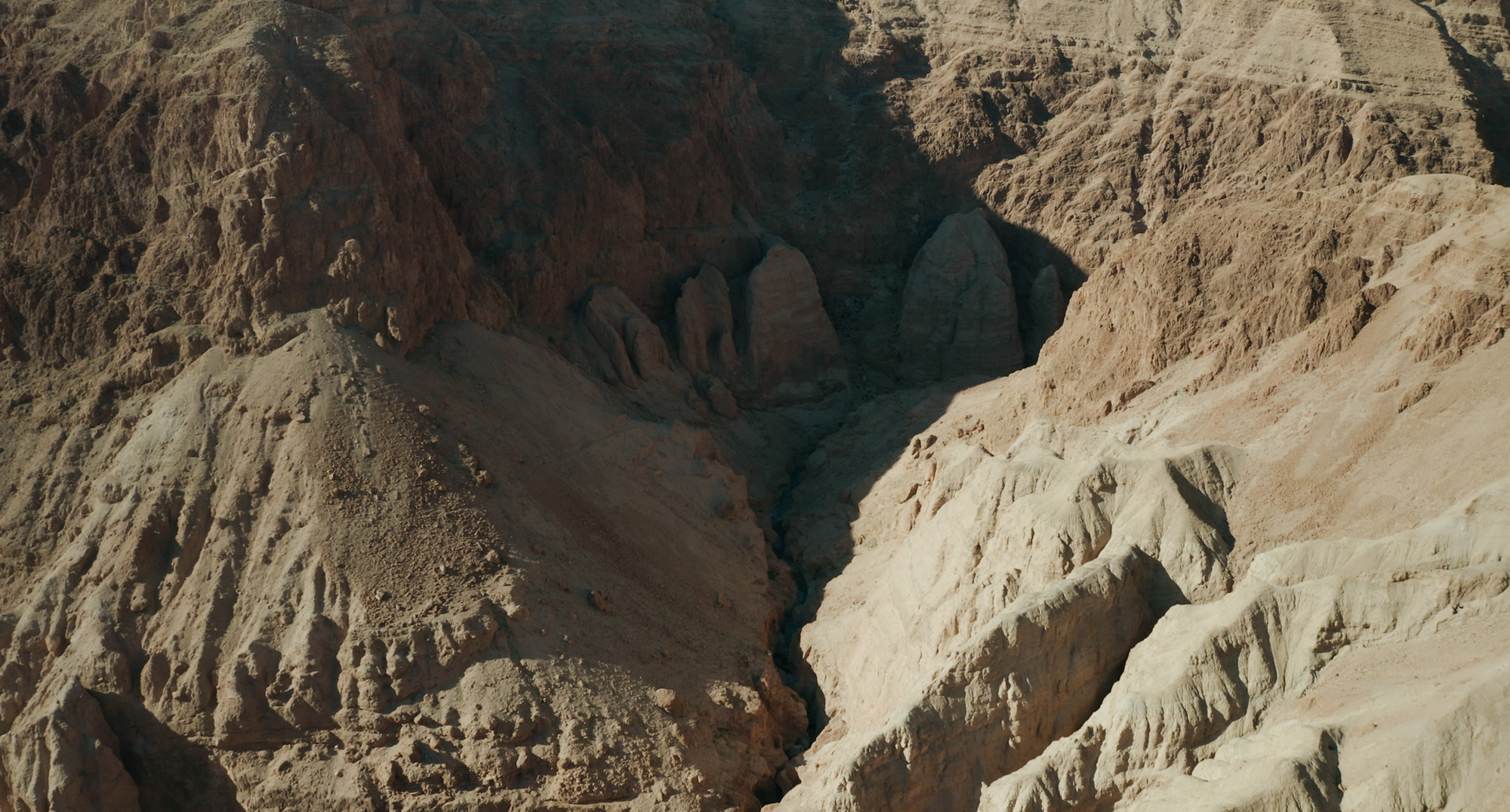125 Up Close: Shuruq Harb
By The Editors



SHURUQ HARB, The Jump, 2020, stills from video: 10 min. Courtesy the artist.
“Humans have a way of ascribing meaning to the landscapes they see,” a computerized voice says, after reminding us that the images halfway into Shuruq Harb’s ten-minute film The Jump (2020) are of the Dead Sea. The words resonate in two ways throughout the work, where emotional states and political narratives are intertwined and projected onto the earth. The Jump opens with shots of craggy ravines, and as the narrator speaks of “depression” in geological terms and how the Jordan Valley—which divides the occupied West Bank from Jordan—is the “lowest point on earth,” one begins to think more of suicide than sediment. Melancholia continues to tinge the imagery as the disembodied narrator wonders, “If we jump from here, how high can we jump?” The camera seems to answer that by taking us on a leap off a cliff past rusted cars mangled along the slopes. Later in the film, we hear a fragmented allusion to a man who went all the way to Istanbul to jump to his death in order to make it look like an accident.
Between these vignettes, two blind Palestinian women describe the feelings of liberation they experience from moving their bodies through space. The first reflects on paragliding in the Caucasus mountains of Georgia. She relates how the euphoria of leaping into the void eclipses the fear of death, and shares her desire for sight if only to “understand where I am in relationship to this whole universe.” The second woman reflects on how swimming soothes her and how she encourages others to find forms of self-expression to mitigate the conditions of alienation that come from living under Israeli occupation. In Harb’s framing, though the two women are unable to see, they have discovered inner experiences of joy from movement—poignant in a lived reality, and cultural context, where the exterior world is full of barriers and divisions, and histories of dispossession and loss.






